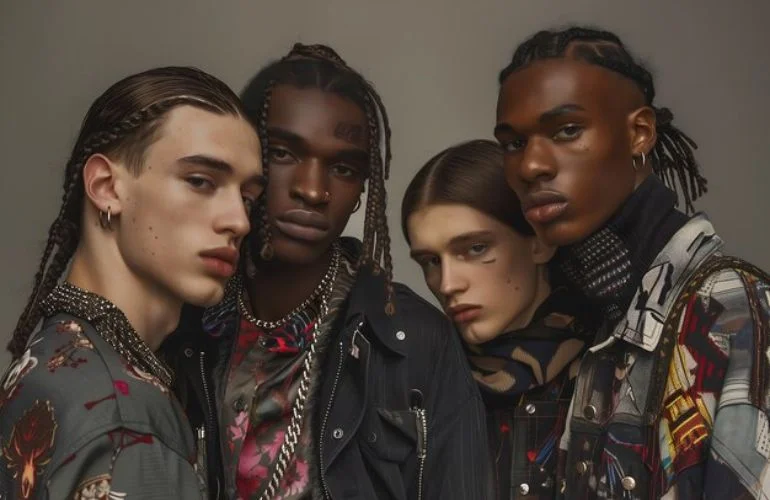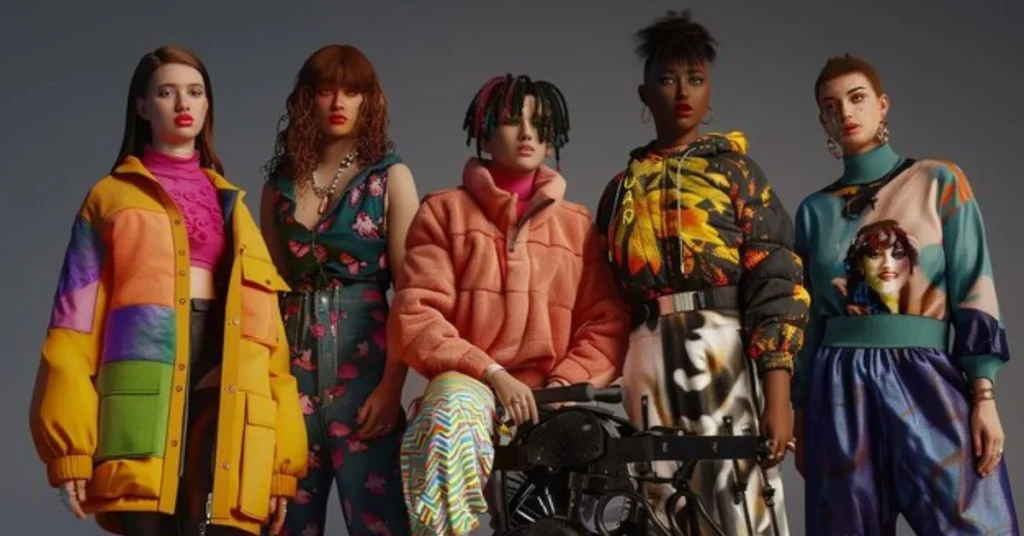
Non binary fashion is revolutionizing the way we think about clothing, offering individuals the freedom to express themselves without being confined to traditional gender norms. As society becomes more accepting of diverse identities, non-binary fashion has emerged as a powerful way for people to express their true selves, regardless of whether they identify as male, female, or somewhere in between. In this article, we’ll explore the evolution of non-binary fashion, its significance in today’s culture, and how it allows everyone to embrace their authentic style.
What is Non Binary Fashion?
Non binary fashion refers to clothing that doesn’t adhere to traditional gendered styles of “men’s” or “women’s” fashion. Instead, it blurs the lines between these categories, offering pieces that anyone can wear, regardless of gender identity. This inclusive approach to fashion challenges the rigid standards set by mainstream brands and celebrates individuality.
The Importance of Non Binary Fashion
Non-binary fashion is not just about aesthetics; it’s about identity and freedom. For many, clothing is a form of self-expression, and limiting styles to “men’s” or “women’s” categories can feel restrictive. Non-binary fashion gives individuals the opportunity to dress in a way that reflects who they truly are, without conforming to societal expectations. This fashion movement empowers people to break free from the gender binary and embrace a more fluid approach to personal style.
The History of Non-Binary Fashion
Breaking Traditional Boundaries
Fashion has long been associated with gender roles, but throughout history, there have been examples of individuals and cultures that defied these norms. In many societies, gender-specific clothing didn’t always exist in the way we think of it today. For example, men in ancient Greece wore tunics similar to modern dresses, and skirts were common attire for both men and women in many cultures.
Must read 10K White Gold Wedding Ring Scrolled Goldman
The Rise of Androgynous Fashion
The 20th century saw the rise of androgynous fashion, which laid the groundwork for today’s non binary fashion movement. Designers like Coco Chanel and Yves Saint Laurent challenged gender norms by introducing suits for women and other gender-neutral pieces. Androgynous fashion blurred the lines between masculinity and femininity, offering a more fluid approach to clothing.

The Non-Binary Fashion Movement Today
Today, non-binary fashion has become more visible, thanks in part to influencers, activists, and designers who champion inclusivity. Brands are increasingly offering gender-neutral collections, and non-binary individuals are finding ways to express their identities through fashion. Social media platforms like Instagram and TikTok have also played a significant role in promoting non-binary fashion, allowing individuals to share their unique styles with the world.
Key Elements of Non-Binary Fashion
Unisex Clothing
Unisex clothing is a staple of non-binary fashion. These garments are designed to be worn by anyone, regardless of gender, and typically feature simple, minimalist designs that focus on comfort and versatility. T-shirts, hoodies, and jeans are common examples of unisex pieces that have become popular in non-binary fashion.
Layering and Mixing Styles
Layering is a popular technique in non binary fashion, allowing individuals to mix and match pieces from different sections of the wardrobe. For example, pairing a traditionally masculine blazer with a feminine skirt creates a unique, gender-fluid look. This approach to fashion emphasizes creativity and individuality, encouraging people to experiment with different styles and combinations.
Oversized and Tailored Fits
Non-binary fashion often embraces both oversized and tailored fits, depending on the look the wearer wants to achieve. Oversized clothing, such as baggy pants or loose-fitting shirts, provides comfort and a relaxed aesthetic, while tailored pieces like blazers and fitted trousers offer a more polished, structured appearance. The key is that individuals can choose whichever style they feel most comfortable in, without worrying about gender labels.
Popular Non Binary Fashion Designers
Harris Reed
Harris Reed is a well-known name in the world of non-binary fashion. Known for creating fluid, genderless designs, Reed’s collections often feature a mix of feminine and masculine elements, with dramatic silhouettes and bold prints. Celebrities like Harry Styles have worn Reed’s designs, bringing non-binary fashion into the mainstream.

Telfar Clemens
Telfar Clemens, the founder of the brand Telfar, has become a key figure in non-binary fashion. Clemens’ designs are known for their inclusivity, with a focus on creating pieces that can be worn by anyone. The brand’s famous “Shopping Bag” has become a symbol of gender-neutral fashion, embraced by people of all genders.
Rad Hourani
Rad Hourani is another designer who champions non-binary fashion. His collections feature minimalist, unisex designs that reject traditional gender categories. Hourani’s work is known for its clean lines, neutral colors, and timeless aesthetic, making it a favorite among non-binary fashion enthusiasts.
How to Build a Non Binary Wardrobe
Start with the Basics
When building a non-binary wardrobe, start with basic, versatile pieces that can be styled in different ways. Items like plain t-shirts, jeans, and blazers are great staples that can be dressed up or down depending on the occasion. These pieces are not tied to any specific gender, making them ideal for a non-binary wardrobe.
Experiment with Colors and Patterns
Non-binary fashion is all about self-expression, so don’t be afraid to experiment with bold colors and patterns. Bright hues, floral prints, and graphic designs can add personality to your wardrobe and help you stand out. Remember, there are no rules in non-binary fashion—wear what makes you feel confident and comfortable.
Focus on Comfort
Comfort is key when it comes to non binary fashion. Since this style movement is about breaking free from traditional gender expectations, it’s important to prioritize how clothing feels on your body. Look for fabrics that are soft and breathable, and choose silhouettes that allow you to move freely.
The Future of Non-Binary Fashion
Increased Representation in Media
As non binary fashion continues to grow in popularity, we can expect to see more representation in media. From fashion magazines to TV shows, non-binary models and designers are beginning to take center stage, promoting inclusivity and diversity in the fashion industry.
More Brands Offering Gender-Neutral Collections
Many mainstream brands are starting to offer gender-neutral collections, catering to the growing demand for non-binary fashion. In the future, we can expect to see more brands embracing this inclusive approach, creating clothing that defies gender norms and offers more options for people of all identities.
Non-Binary Fashion and Sustainability
Sustainability is a major focus in the fashion industry, and non-binary fashion is no exception. Many non-binary designers prioritize eco-friendly materials and ethical production practices, creating clothing that is not only inclusive but also sustainable. As the industry evolves, sustainability will continue to be a key consideration in the development of non-binary fashion.

Conclusion
Non binary fashion is a powerful movement that challenges traditional gender norms and celebrates individuality. By offering clothing that can be worn by anyone, regardless of gender identity, non-binary fashion empowers people to express themselves freely and authentically. As more brands and designers embrace this inclusive approach, the future of fashion looks brighter and more diverse than ever. Whether you’re already exploring non-binary fashion or just curious about it, this style movement offers endless possibilities for creative expression and personal freedom. Click here for more information.
What is non-binary fashion?
Non-binary fashion refers to clothing that is not limited by traditional gender norms and can be worn by individuals of any gender identity.
Can anyone wear non-binary fashion?
Yes, non-binary fashion is for everyone! It encourages people to dress in a way that feels authentic to them, regardless of gender.
Where can I buy non-binary fashion?
Many brands now offer gender-neutral collections, including mainstream retailers and independent designers who specialize in non-binary fashion.
How can I start incorporating non-binary fashion into my wardrobe?
Start by choosing versatile, unisex pieces and experiment with layering different styles to create unique, gender-fluid looks.
Why is non-binary fashion important?
Non-binary fashion promotes inclusivity and allows people to express themselves without being confined to traditional gender categories.






